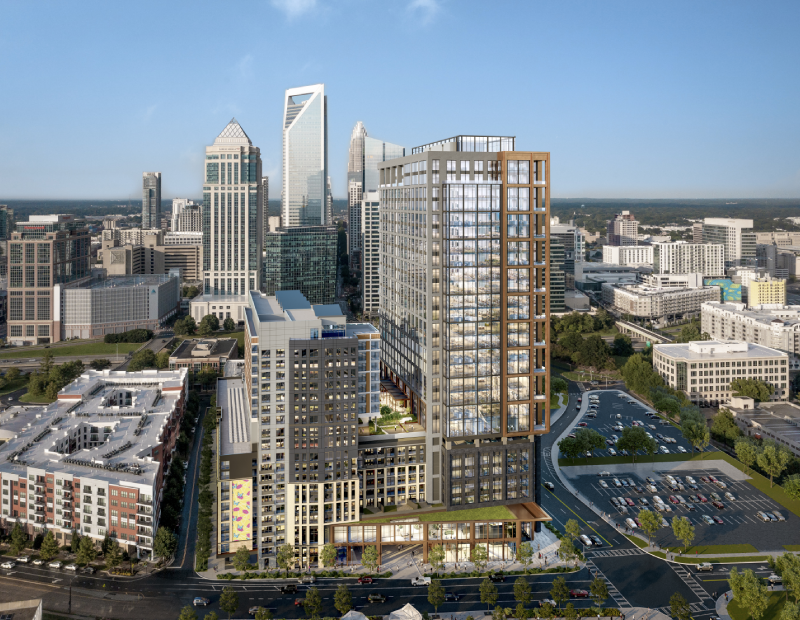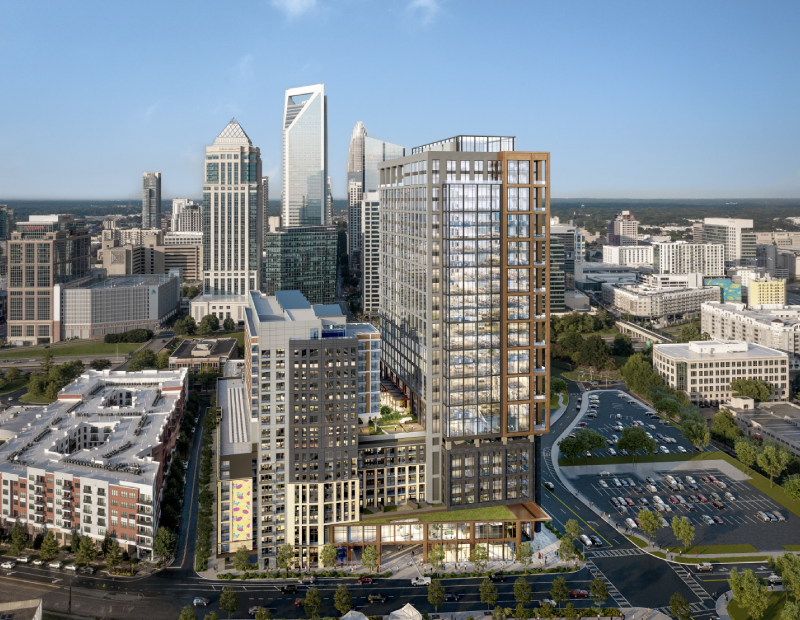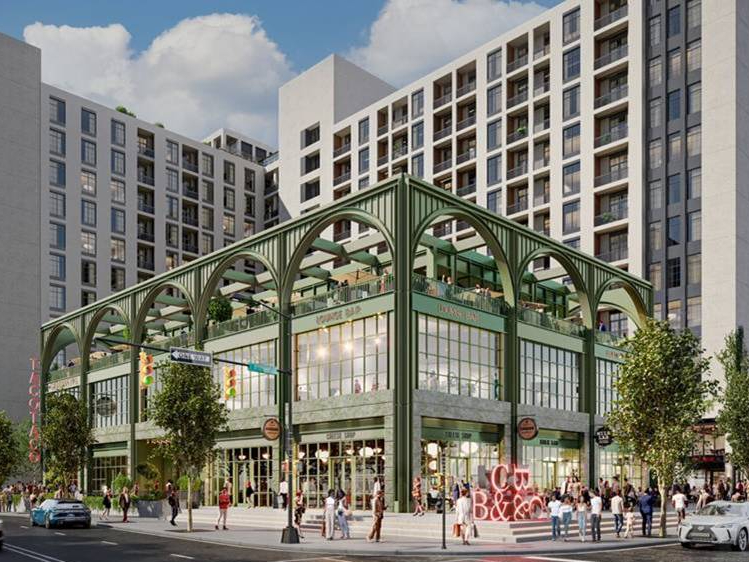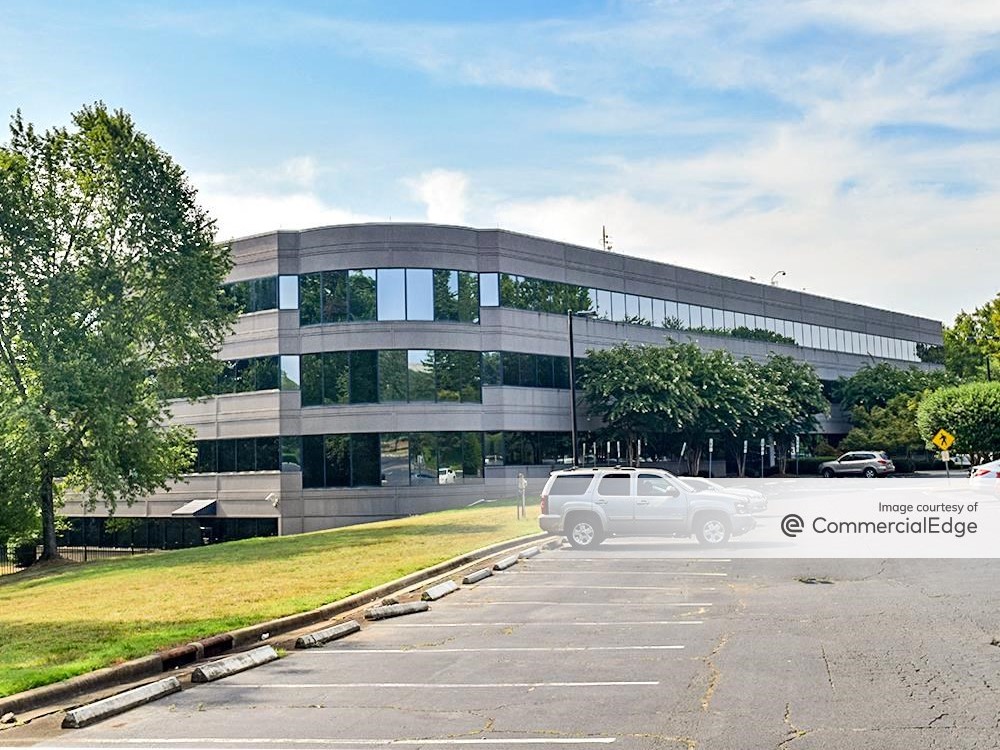Slow Start for Charlotte’s Office Market in Q1

The Charlotte, N.C., office sector had a slow first quarter of the year, with only a single building delivered, according to CommercialEdge data. The metro’s total investment volume in the first three months of 2025 also lagged behind almost all of its peers, clocking in at $20 million.
At the end of the same month, the market had only 527,903 square feet under construction and was on par with the U.S. average of 0.7 percent of total inventory. Nationally, only 2.6 million square feet of office space broke ground in the first quarter, out of which 156,124 square feet were in Charlotte. Still, despite a 2.1 percent year-over-year increase, the market’s vacancy rate was well below the 19.9 percent U.S. average.
Office completions shrink, development sluggish
Charlotte’s office development pipeline as of March comprised only 527,903 square feet under construction, according to CommercialEdge. This figure represented 0.7 percent of its total inventory—on par with the national average.

Under-construction and planned office space represented 4.1 percent of existing stock. The market fared better than Dallas (3.9 percent) and Tampa (3.8 percent) but lagged behind Nashville (4.8 percent). Austin ranked first nationally, with 11.4 percent.
Crescent Communities is set to break ground this year on Carson + Tyron, a two-building campus between the Uptown and South End neighborhoods. The project will include 560,000 square feet of Class A office space, as well as retail, hotel and multifamily components.
In terms of office completions, only one building came online so far this year. The property is a medical office building spanning 36,124 square feet. Flagship Healthcare Properties is the owner.
Investors continue to rely on conversions
As vacancy rates soared across most markets, the trend of converting office spaces into residential units emerged as a compelling choice for property owners. Last year, CommercialEdge launched the Conversion Feasibility Index, a tool powered by Yardi that evaluates the potential of office buildings for conversion by considering factors like walkability, floorplate configuration and the building’s age.

At the beginning of the year, Charlotte had 1,787 office-to-residential units in various stages of conversion. That number almost doubled year-over-year and is expected to continue to grow through 2025. Additionally, there were eight office buildings that had a CFI score between 90 and 100, meaning they would be suitable for an easy redevelopment.
In March, a joint venture of Rockefeller Group, MRP Realty and Asana Partners obtained financing for Brooklyn & Church, a $251 million, 460-unit conversion of the former Duke Energy headquarters. The property’s CFI score was 81, meaning the owners might encounter some difficulties during the redevelopment process.
Charlotte’s office sales volume among the lowest nationally
Charlotte’s office sales volume year-to-date as of March clocked in at just $20 million, the smallest sales volume in the South. The metro lagged behind most of its peer markets besides the Inland Empire ($4 million).

Additionally, assets in the area traded for $81 per square foot, well below the $183 national average. Only Chicago ($68 per square foot), Detroit ($80 per square foot) and the Twin Cities ($63 per square foot) commanded lower prices among the largest U.S. metros.
At the beginning of the year, Carolinas Properties acquired a 125,265-square-foot office building at 4100 S. Stream Blvd. for $8.1 million, according to CommercialEdge. Shopoff Realty Investments sold the asset at a discount compared to its $17 million previous sale price.
Office vacancy rate rises, still under national average
Charlotte’s office vacancy rate at the end of the first quarter clocked in at 16.6 percent, marking a 210-basis-point year-over-year increase. This figure was below the 19.5 percent national average and peer metros Nashville (18.4 percent) and Dallas (24.2 percent). San Francisco (28.6 percent) posted the highest rate in the country.
The market’s average listing rate during the same month was $35.3, marking a 13 percent increase year-over-year and slightly above the national average of $33.4 U.S. The metro surpassed Dallas ($31.4), Phoenix ($28.6) and Houston ($29.4).
Coworking sector remains steady
Charlotte’s coworking sector comprised 1.4 million square feet across 95 locations as of March. The space accounted for 1.7 percent of the total leasable office inventory, on par with the figure registered during the same month last year. However, the metro lagged behind the 2 percent national threshold and peer markets such as Phoenix (2 percent) and Atlanta (2.3 percent).
Regus remained the largest coworking operator in the metro, with 169,784 square feet across 14 locations. The company was followed by Souder Properties with 130,633 square feet and WeWork with 96,916 square feet.
The post Slow Start for Charlotte’s Office Market in Q1 appeared first on Commercial Property Executive.


